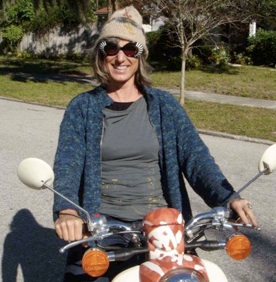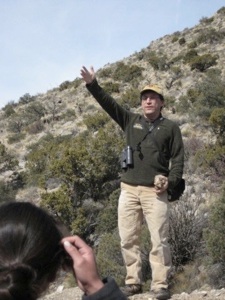grad students

Abigail curtis
Deborah bird
I am interested in studying major patterns in cranial evolution, and how these patterns relate to cranial function. I focus primarily on the mammalian order Carnivora, which contains animals such as jaguars, pandas, coyotes, raccoons, etc. My research has focused on effects of hybridization on morphology, character release and displacement, and sexual dimorphism. The methods that I employ range from linear morphometrics to spherical harmonics and finite element analysis, as well as using morphometric data in conjunction with genetic data. My dissertation work centers on the evolution and biomechanical function of frontal sinuses, which are hollow cavities within the frontal (forehead) bone that form when the nasal epithelium invades surrounding bone. Little is known about which species have frontal sinuses or what function they serve because they are hidden within the skull. I use CT technology to examine the insides of skulls for presence of frontal sinuses, and compute 3-dimensional models of sinuses to study scaling and shape evolution within a phylogenetic and ecological framework, as well as to test the biomechanical significance of these structures.
Post-docs / associates
Dr. anthony friscia
Dr. graham SLATER
My research covers small carnivores, both extant and extinct. I am particularly interested in questions about ecomorphology and community structure. I've done field work in Utah, Pakistan, Egypt, and Kenya. I teach evolution to non-science majors as well as human anatomy, and I also work on shaping our science general education curriculum. I have been an invited speaker and researcher at recent Darwin Anniversary celebrations and workshops on the La Brea tar seep, and I have edited a volume on carnivoran evolution which will be available in Spring 2010.
Natalia kennedy
I am a paleontologist and functional anatomist and have had the opportunity to study a variety of different animals in my work, including Paleozoic tetrapods. At UCLA, my dissertation research focuses on exploring the anatomy and function of the spinal column of the cheetah, Acinonyx jubatus, and an extinct cheetah-like cat, Miracinonyx trumani. In this research, I combine 17th century methods with 21st century technology to produce a new technique by which to examine the vertebral column.
Undergrads
coming soon

I am interested in the evolution of olfaction in mammals and the relationship between morphology and function. I am preparing a comparative study of the morphology of the cribriform plate across several Carnivoran clades to test the hypothesis that cribriform structure reflects olfactory acuity. The cribriform plate is a small section of perforated bone within the brain case through which axons from olfactory tissue pass from the nasal chamber into the olfactory bulb. Number, size and pattern of the perforations vary markedly among species. I am asking how variation correlates to reliance on smell. I am using carnivorans to study this question because they include a number of closely related species with disparate olfactory behaviors and ecologies (e.g. terrestrial and aquatic). To ground my reference to olfactory function, I will be be studying the olfactory receptor (OR) gene repertoire and presence of OR pseudogenes among the selected carnivore species. I will look for correlations between the molecular data and the morphology of the olfactory apparatus.


I’m a former Van Valkenburgh lab grad student, now post-docing with Mike Alfaro at UCLA. my current research interests are focused on patterns and processes in vertebrate diversification. I retain strong interests in functional morphology and biomechanics of predation and feeding. I integrate a variety of methodologies, such as finite element analysis, geometric morphometrics, and phylogenetic comparative methods to address my questions. I am actively involved in ongoing research in the VV lab.

